Are you considering getting a baby snapping turtle as a pet? Then you should know that many challenges await you. Keeping a snapper isn’t for the faint of heart; these animals have plenty of special requirements and can be dangerous to boot.
Of course, one of the most important things to get right is your baby snapper’s diet. What should you feed your pet? How often should they eat? These are questions that you must already have the correct answers to before you get yourself a snapper.
Join us as we discuss what baby snapping turtles eat!
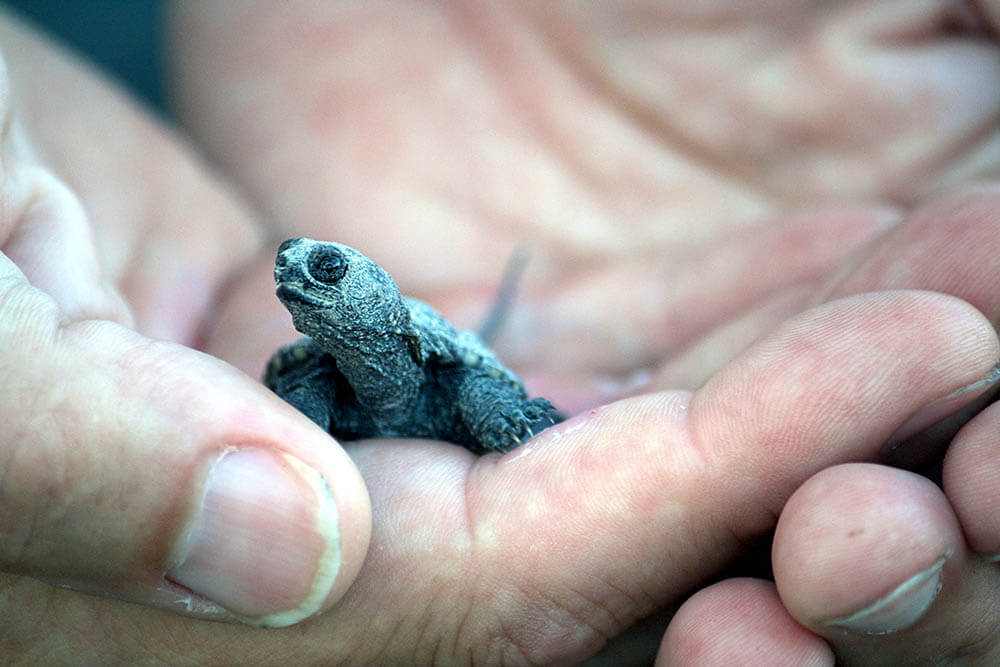
What to Feed Your Pet Baby Snapping Turtle
Snapping turtles are omnivores, which means they eat both plant and animal matter.
This doesn’t mean you can feed your young pet whatever kind of meat or vegetation you can get your hands on, however; you still need to guarantee it consumes the foods most appropriate for it. You should also avoid feeding your reptile too much or too little (we’ll discuss the proper feeding amount and frequency further below).
With that in mind, here are the foods to feed your pet baby snapping turtle.
Meat
Because baby snappers need lots of protein to assure healthy growth, meat should make up between 50% and 70% of their diet.
These critters eat various animals that serve as excellent sources of protein. Below, we list down what types of meat your pet will benefit from the most:
Arthropods and worms
- Bloodworms
- Crickets
- Earthworms
- Grasshoppers
- Mealworms
- Roaches
- Spiders
- Waxworms
Aquatic creatures
- Crayfish
- Feeder fish
- Ghost shrimp
- Guppies
- Minnows
- Shrimp
Mammals
- Frozen-thawed newborn mice (pinkies)
- Frozen-thawed babies of other rodents
Birds
- Frozen-thawed chicks
- Frozen-thawed ducklings
- Shredded chicken
- Shredded turkey
- Small birds
Miscellaneous
- Frogs and tadpoles
- Newts
- Slugs
- Small snakes
- Small snails
As some of these food items are hard to come by, we recommend feeding your pet more convenient options such as mealworms, crickets, feeder fish, pinkies, shredded chicken, and the like. Some of these can be purchased from exotic pet stores, while others are available at supermarkets and groceries.
Some foods, such as insects and worms, are available live or dried. While it’s more challenging to handle live foods, they’re better for snappers than their dried counterparts (more on this below).
Take note: it’s a bad idea to catch live prey for your pet to eat. Any creature taken from the wild (or even your backyard) could be contaminated with toxins or diseases that can make a baby snapper seriously ill. Always buy live foods from reputable sources such as trusted breeders and stores.
Ensure you seek an expert for advice about how to feed your pet meat the right way.
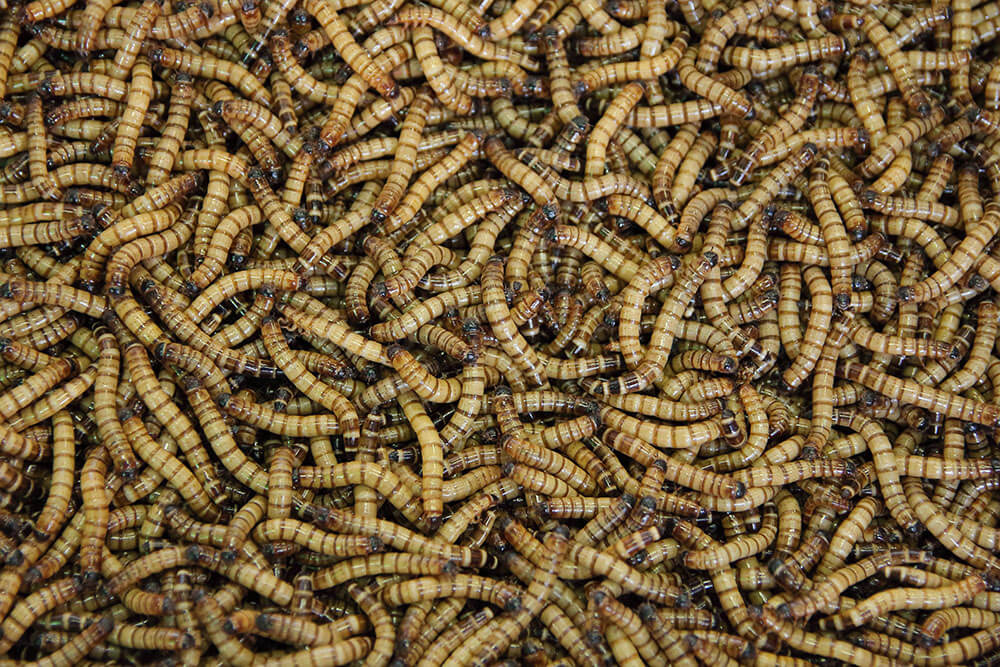
Vegetables
Veggies are a major component of any baby snapper’s diet. Make sure you feed them the following:
- Beet greens
- Carrots
- Celery
- Chinese cabbages
- Collard greens
- Cucumbers
- Leafy greens
- Lettuce
- Kale
- Mustard greens
- Parsley
- Turnip greens
Hatchlings may sometimes avoid eating veggies and demand a meat-only diet. While this won’t necessarily hurt it during the earliest stages of its life, it must start eating vegetables once it’s six months old and above.
One way around this issue is to give your pet greens only. Once it’s hungry, it’ll consume anything you give it – plant matter included.
You should also seek advice from a snapper veterinarian on how to get your pet to eat veggies.
Plants
The following is a list of plants you can feed your pet:
- Algae
- Dandelion greens
- Dill weed
- Duckweed
- Java ferns
- Lili pads
- Moss
- Red leaf salad
- Water hyacinths
- Water lilies
- Waterweed
Like veggies, plants are an important source of nutrients for baby snapping turtles.
Fruits
Fruits contain a host of nutrients that can benefit your baby snapping turtle. We recommend offering it the following goodies:
- Apples
- Bananas
- Blackberries
- Blueberries
- Cantaloupes
- Grapes
- Honeydews
- Mangoes
- Melons
- Pears
- Raspberries
- Strawberries
- Watermelon
As healthy as fruits are, they also contain substances that may not be good for your pet in excess. Therefore, don’t feed it fruits daily but as an occasional treat only. Otherwise, it could end up with digestive problems such as stomach upsets.
Take note that, like humans, snapper hatchlings have different tastes in fruits. If your pet refuses to eat one type of fruit, try providing it with other types until you observe what its preferences are. Also, don’t give it the same fruits over and over again; variety is key!
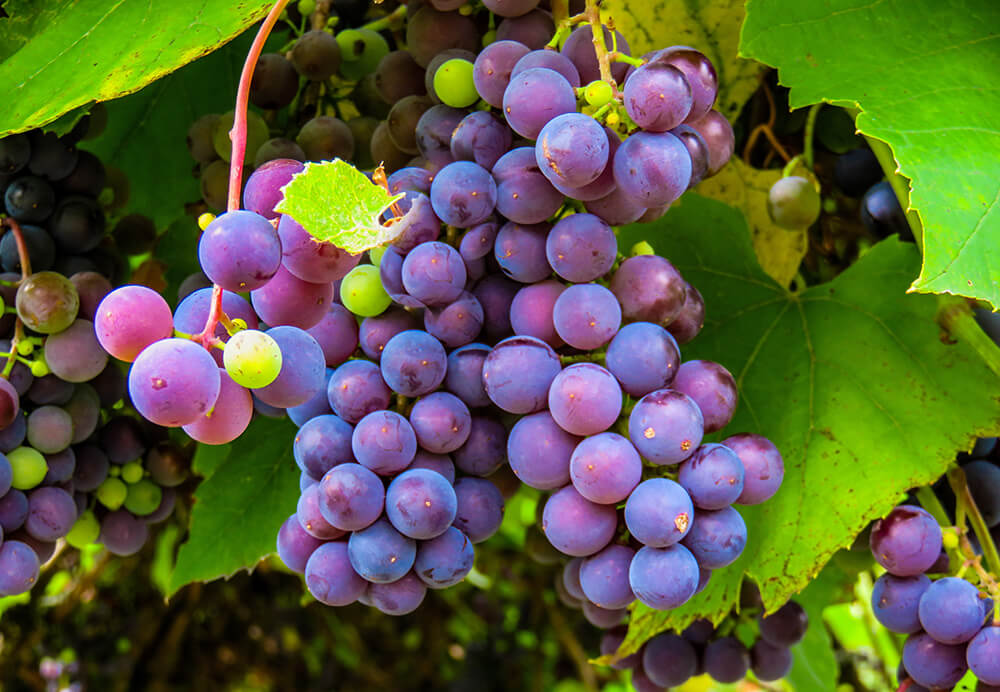
Commercial options
As previously discussed, many of the foods your snapper can eat are available for purchase at pet stores and supermarkets.
However, pet stores also sell pellets, dried worms, and dried insects for snapping turtles, which some keepers use as their exotic pets’ sole protein sources.
Unfortunately, a baby snapper that eats only pellets and dried meats can grow unhealthy. This is why experts state that only around 25% of your pet’s diet should consist of commercial foods. The rest of what it consumes should be a combination of meat, vegetables, plants, and fruits.
The other advantage of giving your pet live foods is that it encourages hunting behaviors, which satisfies its natural predatory urges and grants it the physical and mental stimulation it needs to stay healthy and happy. Not to mention the activity boosts its appetite and makes eating that much more delightful.
Supplements
While a properly fed hatchling doesn’t necessarily need dietary supplements, keep in mind that the foods it eats don’t always contain all the nutrients it needs to stay in the best of health. It’s for this reason we recommend the following supplements for your baby snapping turtle:
- Calcium powder
- Multivitamins
- Vitamin D3
Both immature and mature turtles need calcium for strong, healthy shells, bones, muscles, and more. Vitamin D3 helps them absorb the calcium they take in.
As for multivitamins, these provide baby snapping turtles with an assortment of nutrients, countering any illness-inducing deficiencies they may have and thus ensuring their survival and healthy growth.
Remember to consult a vet before giving your pet any supplements, as they can determine whether or not it really needs them and what kinds of products are most suitable for it.
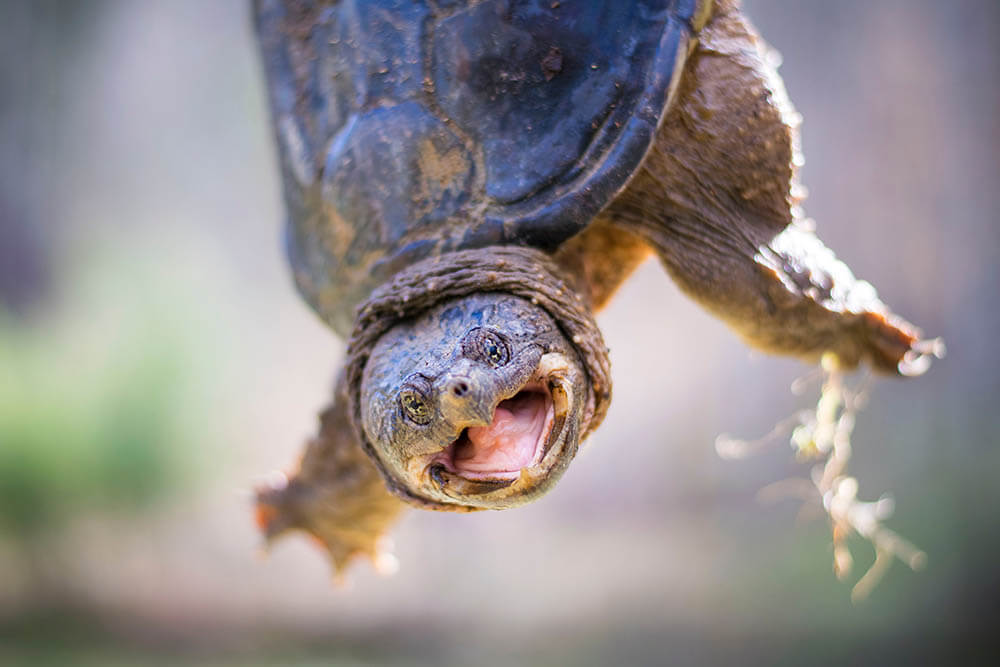
What NOT to Feed Your Pet Baby Snapping Turtle
Baby snappers will eat anything, even foods that aren’t good for them. It’s therefore your responsibility to feed them only the right edibles, as the wrong ones could lead to poisoning, digestive problems, nutritional deficiencies, and other issues.
The following protein sources should be avoided:
- Fishing worms: these may contain toxins that can harm your pet.
- Goldfish: these lack nutritional value for your pet.
- Rose-red minnows: these can cause a vitamin B deficiency in your pet.
- Wild arthropods and worms: these may have diseases or chemicals such as pesticides that can harm your pet.
Avoid giving your baby snapper the following veggies as they’re high phosphorus content:
- Asparagus
- Beets
- Brussels sprouts
- Cauliflower
- Chards
- Corn
- Green beans
- Onions
- Peppers
- Potatoes
- Pumpkins
- Rhubarbs
- Spinach
- Squash
- Sweet potatoes
- Turnips
Don’t feed your young reptile plants such as:
- Azaleas
- Boxwood
- Hyacinth
- Rhododendrons
- Yew
Some fruits contain high levels of citric acid or phosphorus. Others are low in nutritional value. Therefore, don’t give your baby snapper the following fruits:
- Apricots
- Avocados
- Coconuts
- Dates
- Grapefruits
- Guavas
- Lemons
- Limes
- Nectarines
- Oranges
- Prunes
- Raisins
In addition, don’t give your pet any candies, processed foods, and foods containing preservatives and additives, as these can cause obesity, kidney issues, and other problems. Dairy products should also be avoided as snapper hatchlings can’t process lactose.
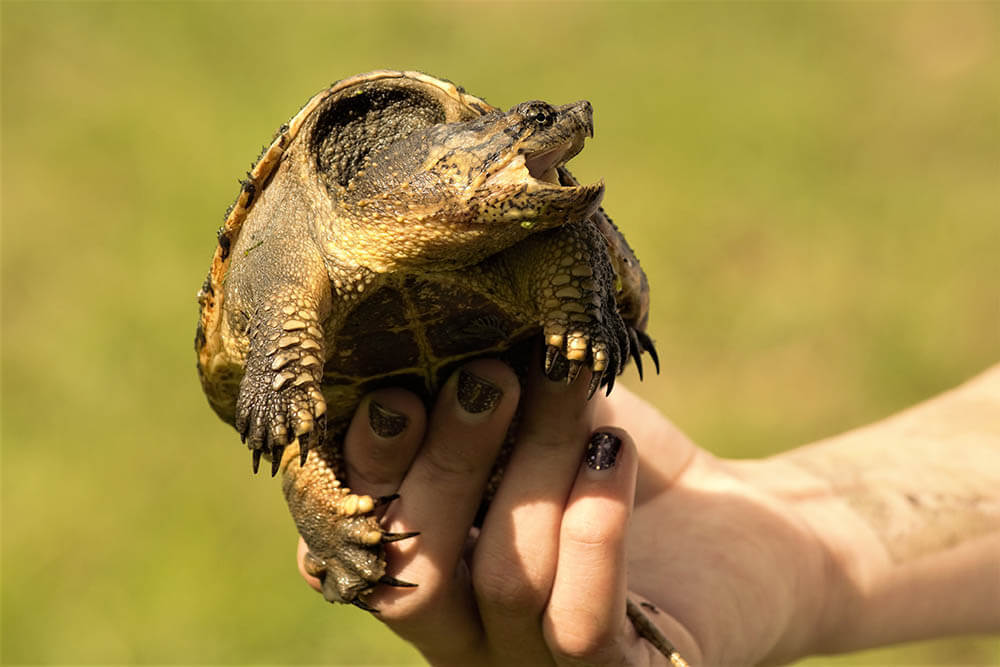
How Often to Feed Your Baby Snapping Turtle
Snapping turtle hatchlings are voracious little critters; if given the chance, one will eat as many times as it could in a single day.
As your pet’s keeper, make sure you feed your pet responsibly to prevent overeating. You can start by giving it a consistent and controlled feeding schedule.
For its first 6 months of life, feed your baby pet once or twice daily. Give them food early in the morning and in the early evening when it’s hungriest and has a great appetite to eat.
Once your snapper reaches the juvenile stage, eating every two days should do.
If you feed your baby turtle regularly, it’ll quickly learn that you’re its provider of food. This will make it approach you in anticipation of a meal every time it sees you. Don’t give in if it begs you for food; stick to your schedule as doing the opposite could lead to unhealthy eating!
How Much to Feed Your Baby Snapping Turtle
In addition to knowing how often you should feed your snapper hatchling, you should also determine how much to feed it per meal. Servings that are too large or small can be as problematic as feeding your pet too frequently or infrequently, so be certain its meal portion sizes are just right.
You can use various methods to figure out the right portion size for your reptile. Below, we discuss two of the simplest and most popular ones.
The head size technique
This is as simple as feeding your baby snapper an amount of food that’s equal to the size of its head.
One way to do this is to take a container (such as a bowl) that’s the same size as your pet’s head, then fill it with a combination of foods. Give this food to your pet to eat.
The 15-minute technique
Put some food in your pet’s enclosure, then leave it alone so it can enjoy its meal. Return 15 minutes later and remove any food it hasn’t eaten yet.
According to experts, a baby snapping turtle will become full 15 minutes after it starts chowing down on goodies. However, if you don’t remove the leftovers, it’ll continue to feed, resulting in overeating. Therefore, it’s important to take away the leftovers once those 15 minutes are up.
This method could lead to food waste. However, you can always store the leftovers and reuse them for your pet’s next meal.
Baby Snapping Turtle Feeding Tips
To ensure every mealtime is a success for your snapping turtle hatchling, it’s best to follow tips recommended by experts, including the following:
- Baby turtles are most comfortable in an aquatic environment, so make sure to feed your pet while it’s in the water.
- Prepare two tanks for your baby snapper: an original tank where it spends most of its time and a feeding tank. Always feed it in the feeding tank. Otherwise, it can leave a mess in its original tank, making your cleaning duties that much more challenging.
- The temperature and water quality of both tanks should be the same to encourage your pet to accept its meal sooner.
- Once your pet is done eating, wait for it to relieve itself. In general, it’ll take about 30 minutes or more before you can remove your tiny friend from its feeding tank and return it to its original enclosure.
- All snappers whether mature or not prefer live prey to dead ones.
- Regularly replace the water in your pet’s tank, so pour fresh water into it after every meal.
- An overweight baby snapping turtle will look bulkier than usual. On the other hand, an underweight baby snapper will have loose skin and show signs of lethargy. If your pet is overweight or underweight, seek a veterinarian’s advice, then adjust your pet’s meals accordingly.
Baby Snapping Turtle Facts
Learn more about baby snappers by checking out the following facts about these amazing creatures!
- Snapping turtles can be found in North America and Mexico.
- Snappers are aggressive predators capable of almost completely turning their heads around to attack their victims.
- Baby snappers get big quickly, growing around 3 inches (7.6 centimeters) during their first year. They then grow about 1 inch (2.5 centimeters) every year after this.
- Baby snapping turtles are popular pets and can be purchased from exotic pet stores and online shops. A hatchling under 3 inches (7.5 centimeters) will cost you about $15.
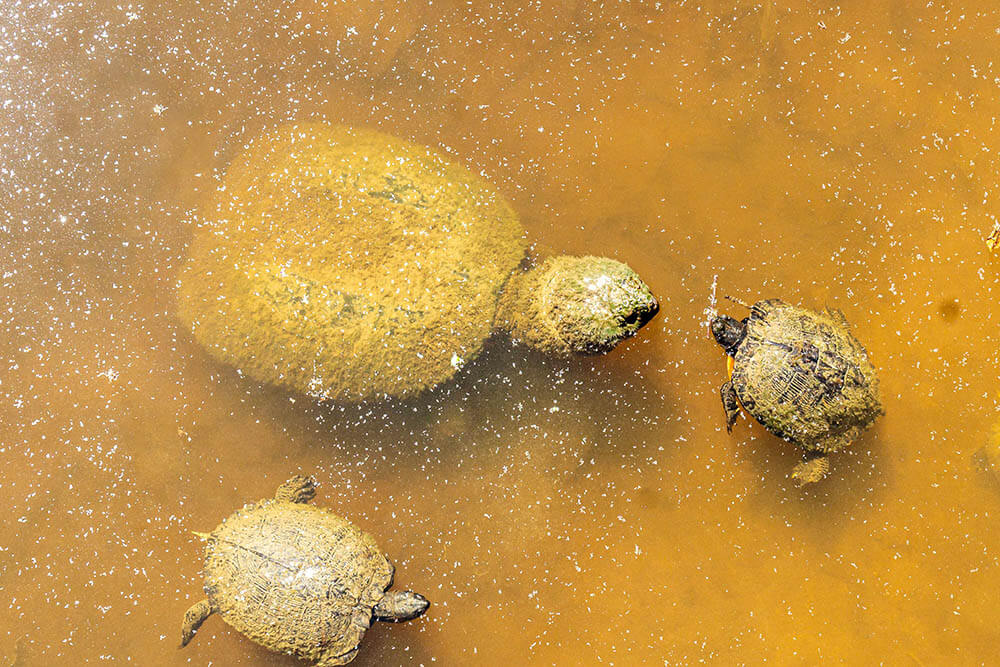
Conclusion
Baby snapping turtles are ravenous creatures that will eat just about anything. Because of this, it’s crucial for you, as your pet’s keeper, to know what foods it should and shouldn’t eat.
Keep your snapper hatchling healthy by feeding it a variety of animal proteins, vegetables, plants, and fruits. Commercial products and supplements can also help.
If you have any other concerns about your baby turtle’s diet, don’t hesitate to seek help from an expert such as a snapper turtle veterinarian.
